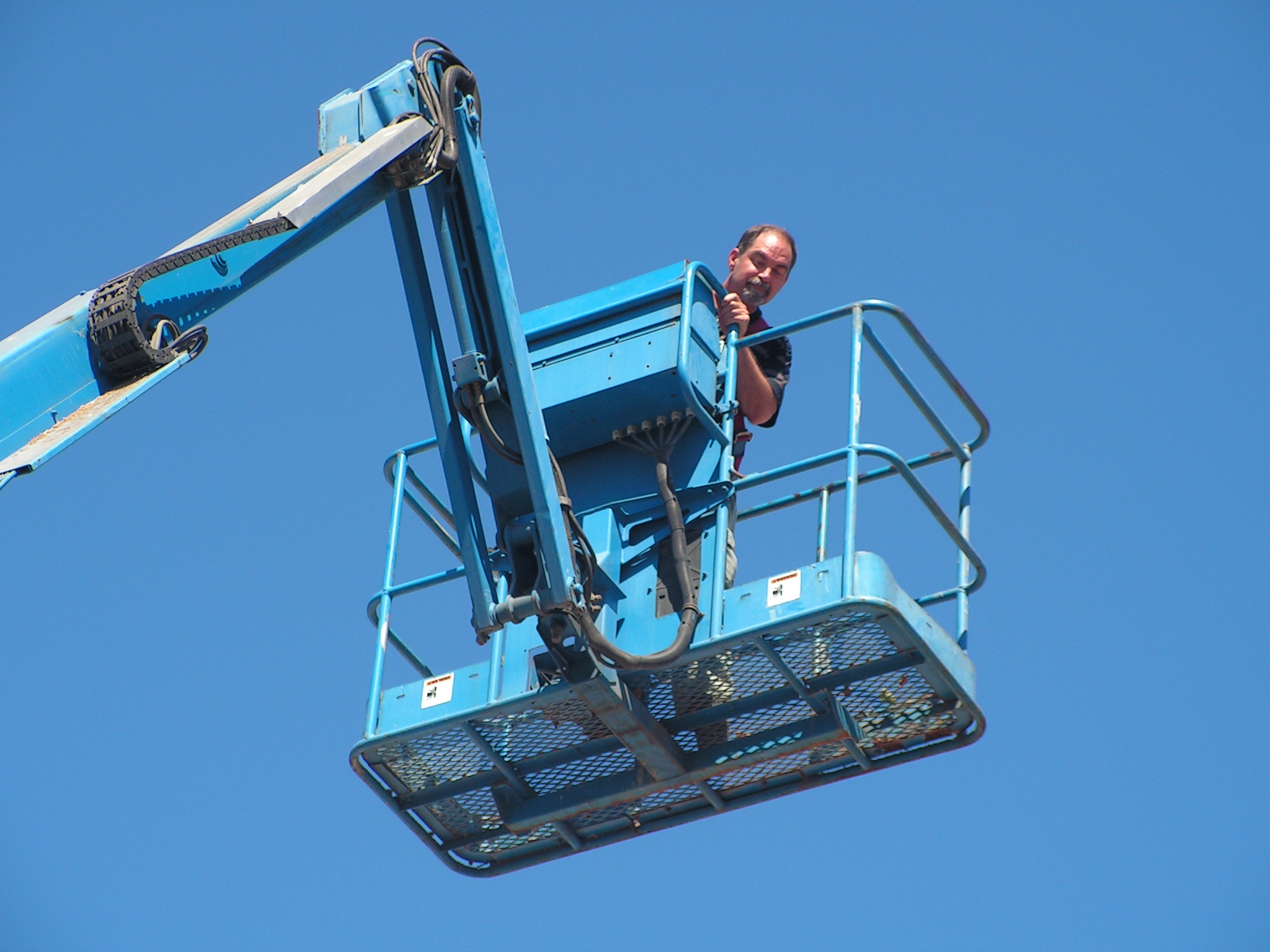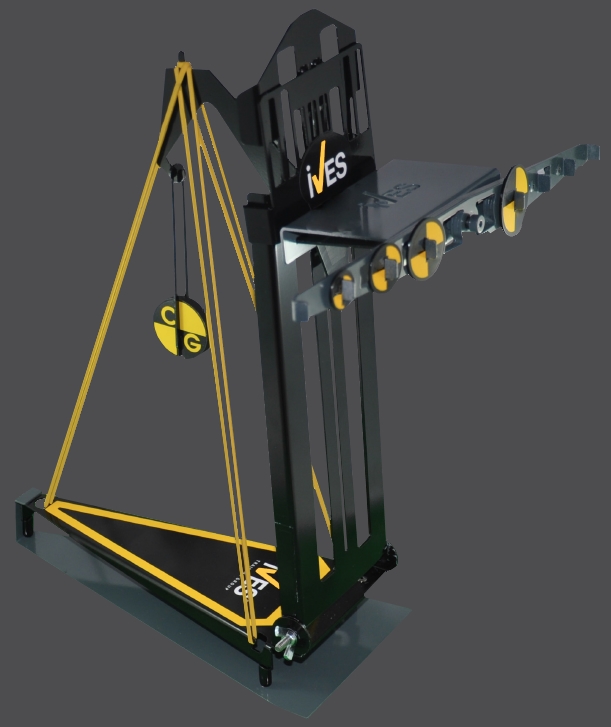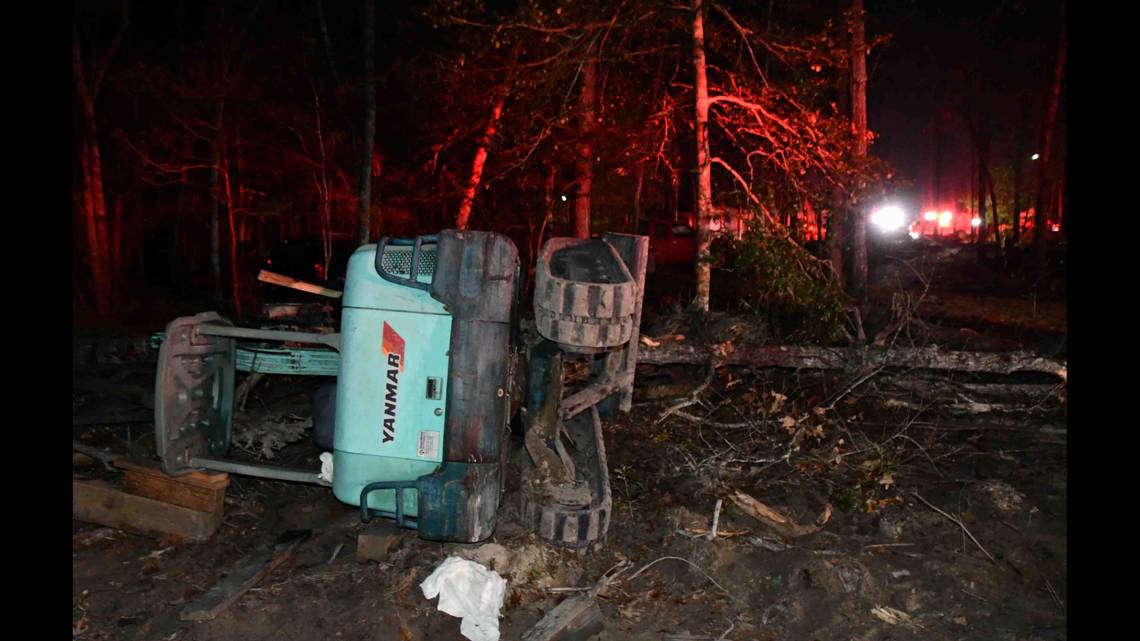Hanging Loose - Or Not

Fall protection for workers on elevated platforms have been promoted for over a century, as the historic National Safety Council safety warning (see NSC graphic) demonstrates.
Even after almost 50 years in the access industry, I find the subject of fall protection to be, if nothing else, bewildering. And it’s not that I don’t understand the subject, but rather that I don’t understand all the confusion, false information, inconsistent regulatory enforcement, non-complying work processes, and in some cases, plain lack of knowledge.
It is quite obvious that fall protection is necessary when working at heights. It should also be obvious that gravity is involved in the act of falling. One would think then that physics would dictate the regulations that would dictate worker behavior. The reality of the situation is that the matter of fall protection is multi-faceted and not necessarily fact-based.
The science behind falls
The physics of a fall are undisputed, particularly since the force of gravity has been reasonably stable for quite some time. Here is how it works: you choose to jump off a mobile elevating work platform (MEWP) platform from 30 feet. Surprisingly you fall down instead of up, due to gravity. As you fall, you accelerate, due to gravity. The force with which you will hit the level below is based on your initial speed, the distance you fall, and here is the important stuff, how quick you come to a stop, and how far you travel while coming to a stop.
Since you chose to jump off the MEWP platform, hopefully you also chose the surface upon which you will land. If its concrete, you are going to stop quickly; if you chose marshmallows, you’ll be in better shape. In other words, choose the marshmallows.
Regulations are based on the science of falling. For example, the OSHA regulations require that the force on your body can be no more than 1,800 pounds. This limits your free fall. The regulations address anchor strength, again based on the applicable physics. To decrease the load on your body, and the anchor, the industry has employed the use of retractable lanyards and shock-absorbing lanyards, which coincidentally allows workers to comply with the regulations.
It is interesting to note that since the regulations are based on the science of physics, they don’t necessarily reflect industry practice. And here is where it gets bewildering. While the regulations make sense, based on the physics, they don’t necessarily make sense when applied to actual work practices.
OSHA and fall protection
For example, back in 1994 when the current OSHA fall protection regulations were promulgated, the scaffold industry was up in arms, claiming that there was no way that erectors could comply with the regulations. And, in many instances, it was, and still is, true. Erectors asked how they could limit a free fall to 6 feet when the only anchor was at their feet? How could erectors tie off to a scaffold frame which was not rated for the required 5,000 pounds? For that matter, who rates the anchor? That question brings us to the next issue.
The OSHA regulations specify that fall protection anchors shall support 5,000 pounds or be designed by a Qualified Person. If experience is any indicator, rare is the occasion when a worker connects to an anchor that is actually rated for 5,000 pounds. In fact, other than purpose-built anchors for users of such things as suspended scaffolds, workers connect to what they estimate to be a 5,000-pound anchor.
Without analysis, any estimate is purely a guess. Luck is with the typical worker, however. First, the worker rarely falls so the anchor is never tested. Second, it looks good that the worker is tied off, so everyone is satisfied. Third, OSHA is delighted the worker is utilizing fall protection and therefore doesn’t give the anchor much thought. And fourth, everyone thinks their fall protection, and anchor, are working and consequently they declare success. The “Look Good” hypothesis is accepted without proof. Custom and practice is the accepted norm; that is, nobody really complies with the regulations addressing fall distance, anchor strength, deceleration distance, force on the body, or physics. Apparently, that is okay since the typical force on the anchor is a lot less than 5,000 pounds and again, people get lucky.
MEWPs
Speaking of regulations, MEWPs present an example of bewildering regulations. Self-propelled elevating work platforms, a member of the mobile elevating work platform family of products, and known as scissor lifts, have been determined by OSHA to be a scaffold, not a MEWP.
Therefore, the OSHA scaffold regulations addressing fall protection apply to scissor lifts. A careful reading of the fall protection regulations in OSHA 29 CFR 1926.451(g)(1) reveals that once the platform is more than 10 feet above the level below either a guardrail system or a personal fall protection system is permissible. This would mean that if you never raise the platform above 10 feet, no fall protection is required. At 10 feet, you must select the fall protection you will be utilizing. Keep in mind that if you choose personal fall protection, it probably won’t work at or below 10 feet — you will hit the ground. But hey, you look good tied off.
Fortunately, scissor lifts typically always have a guardrail system so you don’t need a personal fall protection system. Too bad the custom and practice requires both systems be used and even some manufacturers require it. One laughable argument for the use of both systems is in response to those workers who decide to climb on top of the guardrail. Since you can’t fix stupid, we all pay the price.
So, there you have it. While the regulations are based on science, in many instances actual practice inhibits compliance. So, the default solution is to wear a harness, use a lanyard, either shock-absorbing or retractable, and connect it to something that looks really strong. You now have conformed with the custom and practice and more importantly, have met the requirements of the Look Good Hypothesis (LGH.) Just don’t fall.
Product Feature: Models

We have an extensive line of die cast scale models available for forklifts, mobile elevating work platforms, loaders and excavators.
Each equipment model is made using heavy die cast with working components, realistic exterior and interior detailing.
Available for CAT, Clark, Toyota, JLG, Bobcat, Genie, and BT brands.
Also available, our CASTLE Multifunction Model to help demonstrate capacity, stability and leverage to your operators.
These die cast training aids are a terrific visual for every trainer to use as a training aid in their operator class.
Inventory will vary and specific models may not be available.
Click to browse or purchase
Models.
Incident Report: Stone importer fined $330K USD after forklift fatality

A stone importer has been convicted and fined $330,000 after a worker was fatally crushed at a Dingley Village warehouse in April 2020.
Australia Rong Hua Fu Pty Ltd, trading as RHF Stone, was sentenced on 14 December 2022 in the County Court after pleading guilty last month to three charges of failing to, as far as was reasonably practicable, provide or maintain a
safe working environment.
The court heard a 34-year-old worker sustained fatal injuries after three stone slabs – each weighing up to 550 pounds – pinned her against the interior wall of a shipping container she was helping unload.
The worker had used a screwdriver to separate the slabs before inserting a wedge in the gaps so the slabs could be gripped by a clamp attached to a forklift.
As she hit the wedge into the opening, the unrestrained slabs toppled and crushed her.
The court heard RHF Stone had no formal procedure on how to unload slabs.
The company should have had systems in place to ensure slabs were stored at the correct angle, workers remained outside the fall zone of the slabs at all times, and temporary restraints were used to limit the movement of slabs during unloading.
WorkSafe Victoria’s investigation also identified multiple safety failings with a forklift being used at the time of incident.
The forklift was not rated for use with the attachments it had been fitted with, had had makeshift counterweights added to increase its capacity and was not within its safe working load when a boom extension was in use.
Furthermore, the boom extension had been fitted in an unsafe manner. Finally, a spring-activated safety feature on the clamp attached to the forklift – designed to assist with gripping the slabs – had also been replaced with rubber bands.
The court heard storage racks used to house the slabs inside the warehouse were also unsafe.
The steel racks were not load rated and, to increase capacity, some of the horizontal arms slabs were placed on had been extended using wooden blocks that were not secured to the floor, creating the risk of inadvertent movement.
WorkSafe Executive Director Health and Safety Dr Narelle Beer said the worker’s death would have been prevented if safe systems of work had been followed.
“Put simply, this tragic event should never have occurred,” Beer said.
“Regardless of the industry, all employers must ensure hazards at their workplace are identified so that the risks to health and safety can be assessed and eliminated or reduced.
“WorkSafe will not hesitate to prosecute those who fail to take their duty to create a safe work environment seriously.”
To manage risks when unloading containers the following should occur:
- Consult with the supplier on the best shipping configuration for ease and safety of unloading
- Have a system of work for safe unloading that includes assessing if the load can be safely unloaded and the sequence of unloading
- Ensure the container is sitting level to reduce the risk of panels, slabs or other objects becoming unstable and toppling and check the outside for damage that may indicate content has shifted
- Before opening or releasing transport restraints, consider if the use of a container door safety strap or equipment to prop or support contents that may have shifted is needed to prevent toppling
- Ensure that no one is in the fall shadow of any object at any time and use equipment to minimize workers’ interaction with contents
- Ensure that any engineering controls, for example additional load restraints, are introduced from outside the fall shadow
- Ensure that lifting gear, such as shackles, cables and clamps, is regularly checked by a competent or licensed person in accordance with manufacturer’s instructions
- Ensure any forklift being used has the appropriate load rating for all fitted attachments and is being used as intended.
Ask Bob

Free technical support for all IVES Certified Trainers!
Question:
Hi Bob,
As an IVES Certified trainer do I have access to any IVES powerpoint slide presentations for MEWP, Standard Forklift & Rough Terrain?
Thank you!
Answer:
Thanks for checking in with us.
The digital training aids (slide presentations that can be used with the chapter review questions in the ORMs) are available for purchase.
They can be purchased in 2 different formats. You can buy the “download to a computer and then it is locked to that computer” version or the “streaming” version.
The streaming version can be accessed of our website from any computer you are using as long as you have internet access.
I use them at every operator class I do as I find that it helps give a great visual accompaniment if they are having questions or not sure about an answer as I review the chapter quizzes.
Also, the lesson plans available for free on your member dashboard tell you what slide numbers go with each question to help you make it flow.
Bob
Interesting Articles
- Scissor lift used in unsafe manner..more.
- Excavator operator saves stranded person due to flooding..more.
- Forklift operator dies after being pinned by machine..more.
- Company faces six-figure fine after work falls from forklift...more.
- Excavator used to dig out pony from sinkhole...more.
- Man arrested after worker killed by machine that fell off forklift...more.
- Man dies after excavator rolls over and traps him...more.

Client Testimonials

"This was incredibly informative for me and opened up my eyes to so much more in the world of safety and how companies manage training programs." Hallie, Premium Combo Train the Trainer Program.
"This is the best forklift class I have attended." Aldo, Express Standard Forklift Train the Trainer Program.
"Great program! Highly recommend not just to get certified as a forklift trainer but anyone that wants to get more comfortable getting up and training a room full of people." Dara, Premium Forklift Trainer Program.